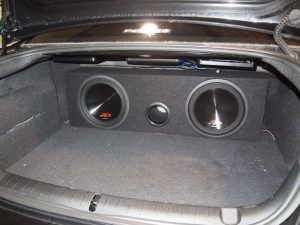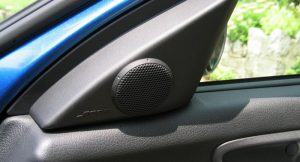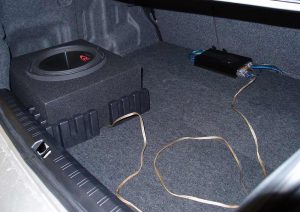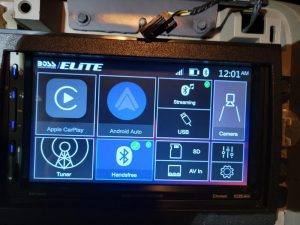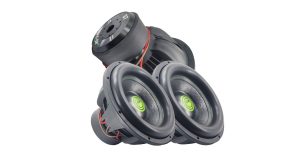Choosing the right remote wire gauge for your car amplifier can make or break your audio system’s performance. The remote wire, a small but critical component, sends the signal from your head unit to your amplifier, telling it when to power on or off. Picking the wrong gauge can lead to unreliable operation, voltage drops, or even damage to your system. So, how do you select the perfect wire size? Let’s dive into the details, explore the factors that matter, and guide you to the best choice for your setup.
Contents
Why the Remote Wire Matters
The remote wire acts like a messenger in your car audio system. When you turn on your head unit, the remote wire carries a low-voltage signal (typically 12V) to the amplifier, triggering it to power up. If the wire is too thin, it may not handle the current properly, causing weak signals or inconsistent performance. On the other hand, an overly thick wire is unnecessary and can clutter your installation. Striking the right balance ensures your amp runs smoothly and your music sounds crisp.
Several factors influence the ideal remote wire gauge, including the amplifier’s power rating, the length of the wire run, and the current draw. By understanding these elements, you can make an informed decision that optimizes your system’s efficiency.
Understanding Wire Gauge Basics
Wire gauge refers to the thickness of the wire, measured using the American Wire Gauge (AWG) system. In this system, a lower number indicates a thicker wire. For example, a 16 AWG wire is thicker than an 18 AWG wire. Thicker wires can carry more current with less resistance, which is crucial for maintaining signal strength over longer distances.
For remote wires, the current draw is relatively low compared to power or ground cables. Most amplifiers require only a small amount of current (typically 100-500 milliamps) to activate. Because of this, remote wires don’t need to be as thick as the main power cables. However, choosing a wire that’s too thin can still cause problems, especially in high-power systems or long wire runs.
Key Factors to Consider
When selecting the right remote wire gauge, focus on these critical factors: amplifier power, wire length, and installation environment. Each plays a role in determining the best wire size for your setup.
1. Amplifier Power Rating
The power rating of your amplifier influences the remote wire’s requirements. High-powered amps (1000 watts or more) often demand more robust wiring throughout the system, including the remote wire. While the remote wire itself doesn’t carry the full load of the amplifier, a more powerful amp may require a slightly thicker wire to ensure a stable signal. For most setups, a 16 AWG or 18 AWG wire works well, but double-check your amp’s manual for specific recommendations.
2. Wire Length
The distance between your head unit and amplifier matters. Longer wire runs increase resistance, which can weaken the signal. If your amplifier is mounted in the trunk and your head unit is upfront, you’ll need a longer remote wire—potentially 15-20 feet. In such cases, opt for a thicker wire (like 16 AWG) to minimize voltage drop. For shorter runs (under 10 feet), an 18 AWG wire usually suffices.
3. Installation Environment
Car audio systems operate in challenging environments. Vibrations, heat, and moisture can affect wire performance. Choose a remote wire with durable insulation to withstand these conditions. Additionally, consider how you’ll route the wire. If it runs alongside power cables or near heat sources, select a wire with high-quality shielding to prevent interference.
Recommended Remote Wire Gauges
Based on the factors above, here’s a quick guide to choosing the right remote wire gauge:
- 18 AWG: Ideal for low-to-medium power amplifiers (up to 500 watts) with short wire runs (under 10 feet). This gauge is lightweight, affordable, and easy to work with, making it a popular choice for most car audio setups.
- 16 AWG: Best for high-power amplifiers (500-1000 watts) or longer wire runs (10-20 feet). The thicker gauge reduces resistance, ensuring a strong signal over extended distances.
- 14 AWG: Rarely needed for remote wires but suitable for extremely high-power systems (over 1000 watts) or very long runs (over 20 feet). This gauge is overkill for most applications, so use it only if your amp’s manual specifies it.
Always consult your amplifier’s documentation for exact requirements. Some manufacturers include remote wire recommendations to ensure optimal performance.
Common Mistakes to Avoid
Selecting the wrong remote wire gauge can lead to frustrating issues. Here are some pitfalls to steer clear of:
Using a Wire That’s Too Thin
A wire that’s too small for the job can’t handle the current, leading to voltage drops or intermittent amp operation. For example, using a 20 AWG wire for a high-power amp with a long run may cause the amplifier to turn on and off unexpectedly. Stick to 16 AWG or 18 AWG for most setups to avoid this problem.
Overcomplicating with Oversized Wires
While thicker wires reduce resistance, going overboard with a 12 AWG remote wire is unnecessary. Oversized wires add bulk, increase costs, and complicate installation without providing significant benefits. Choose a gauge that matches your system’s needs.
Ignoring Insulation Quality
Not all wires are created equal. Cheap, poorly insulated wires can degrade over time, especially in a car’s harsh environment. Invest in high-quality wires with durable, flexible insulation to ensure long-term reliability.
How to Install the Remote Wire
Once you’ve chosen the right gauge, proper installation is key to maximizing performance. Follow these steps for a clean, effective setup:
- Plan the Route: Map out the path from your head unit to the amplifier. Avoid running the remote wire alongside power cables to prevent electrical interference. If you must cross power cables, do so at a 90-degree angle.
- Measure and Cut: Measure the distance and cut the wire to length, leaving a little extra for flexibility. Strip about ¼ inch of insulation from both ends.
- Connect to the Head Unit: Locate the remote wire output on your head unit (often labeled “REM” or “Remote”). Connect one end of the wire securely, using a crimp connector or soldering for a solid connection.
- Route the Wire: Run the wire through the car, securing it with zip ties or clips to keep it tidy and safe from damage. Use grommets when passing through metal panels to prevent abrasions.
- Connect to the Amplifier: Attach the other end to the amplifier’s remote input terminal. Ensure a tight, secure connection to avoid signal loss.
- Test the System: Turn on your head unit and verify that the amplifier powers up reliably. If it doesn’t, double-check your connections and wire gauge.
Additional Tips for a Top-Notch Setup
To get the most out of your remote wire and car audio system, keep these tips in mind:
- Use Quality Connectors: Invest in high-quality crimp connectors or terminals to ensure secure, reliable connections. Loose connections can cause signal issues.
- Label Your Wires: If your setup includes multiple wires, label the remote wire to avoid confusion during installation or troubleshooting.
- Consider a Relay for High-Power Systems: In rare cases, very high-power amplifiers may benefit from a relay to boost the remote signal. Consult a professional installer if you’re unsure.
- Test Voltage: Use a multimeter to check the voltage at the amplifier’s remote terminal. It should match the head unit’s output (typically 12V). A significant drop indicates a wire that’s too thin or a poor connection.
Why Quality Matters
Investing in a high-quality remote wire pays off in the long run. Premium wires offer better conductivity, durable insulation, and resistance to environmental factors. Brands like Kicker, Rockford Fosgate, and Stinger produce reliable wiring kits that include remote wires suited for car audio applications. While budget options may seem tempting, they often sacrifice performance and longevity.
Wrapping It Up
Choosing the right remote wire gauge for your car amplifier doesn’t have to be complicated. By considering your amplifier’s power rating, the length of the wire run, and the installation environment, you can select a wire that ensures reliable performance. Stick to 18 AWG for most setups, step up to 16 AWG for high-power amps or longer runs, and avoid common mistakes like using undersized wires or skipping quality insulation. With the right gauge and proper installation, your audio system will deliver the powerful, clear sound you’re after.
Ready to upgrade your car audio? Pick the right remote wire gauge, follow best practices, and enjoy a seamless, high-performance setup that brings your music to life.

